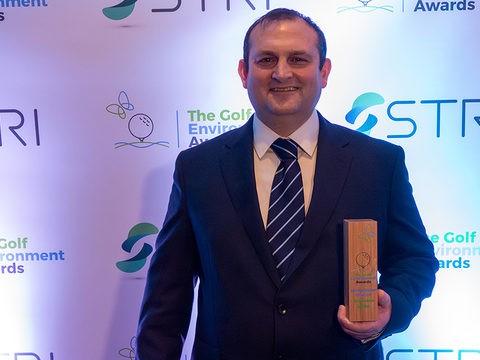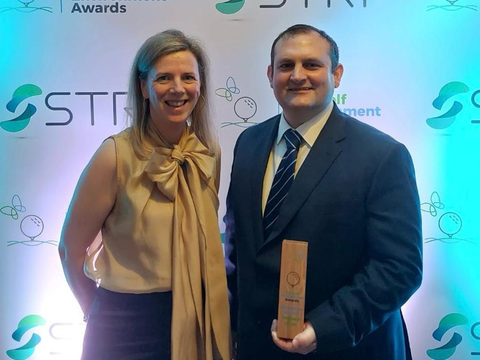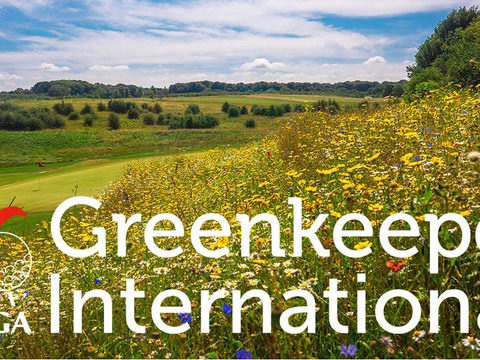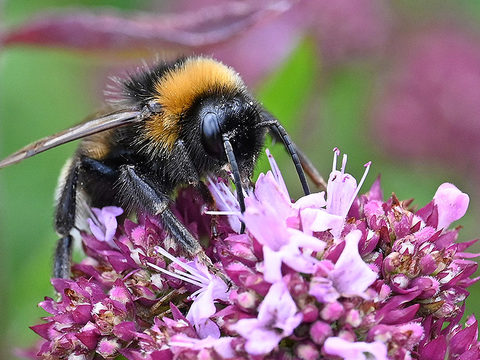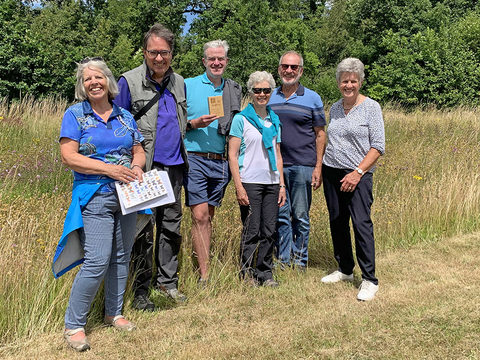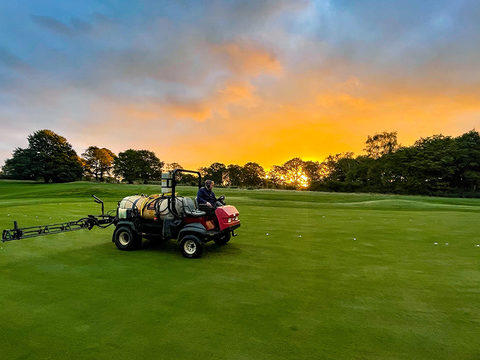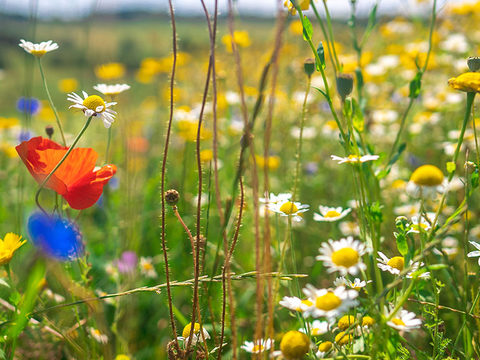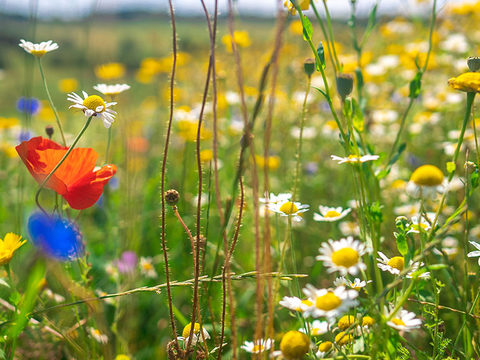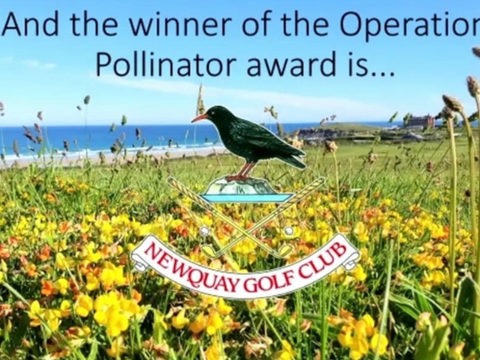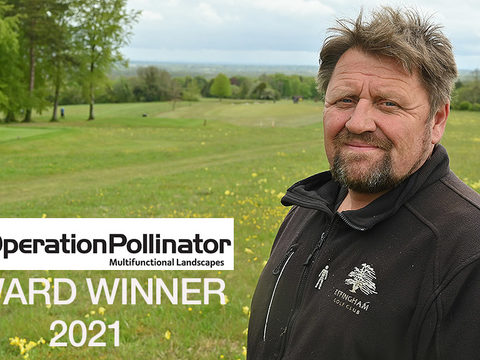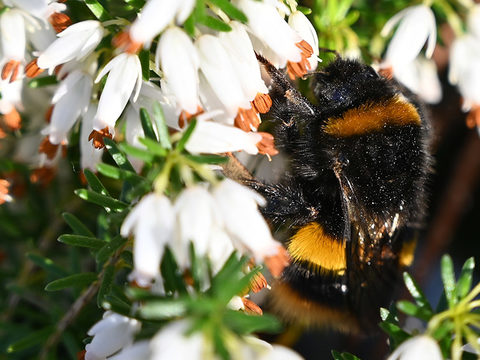Scrape out an award winning future for pollinators
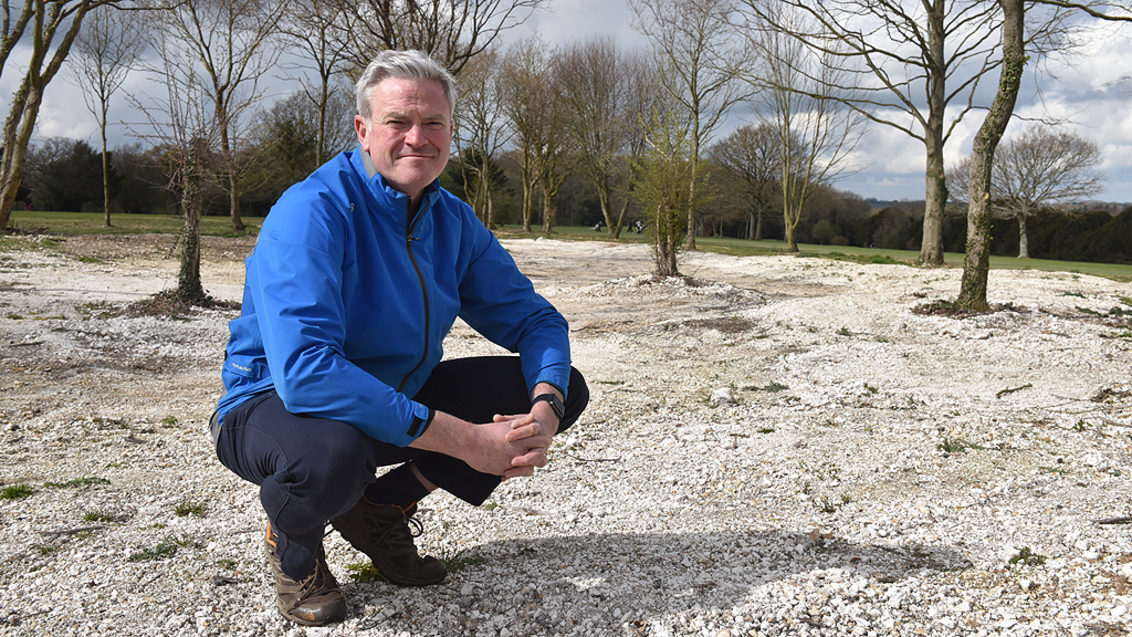
Corhampton Golf Club in Hampshire won this year’s prestigious Syngenta Operation Pollinator Award, presented at BTME. However, its work in pioneering restoration of natural downland habitats has also won the praises of ecology conservation bodies and the club’s own members alike.
Head Greenkeeper, Iestyn Carpenter (above), enthuses that although the site is relatively small, they have still found innovative ways to integrate naturalistic conservation features. He believes it adds enormously to the playing experience, enhances the wider environment, and creates a more sustainable golfing business.
Having expanded the Hampshire course from nine holes and a double-tee 18 in the 1970s, to a full 18 holes in the 90s, Iestyn highlighted that it is difficult to create a true expansive downland feel on such a tight layout. However, by establishing ecological features that are characteristic of natural download, the whole vista is being transformed.
Just a few miles away, on the same chalk scarp ridge, Magdalen Hill Down, outside Winchester is one of the UKs richest downland habitats, which draws ecologists from across the world to study the cherished flora and fauna.
Now, Iestyn is recreating some of the most important elements of the downland habitat, within the constraints of the golf course design and management. Key to that are chalk scrapes that emulate the conditions to encourage native species.
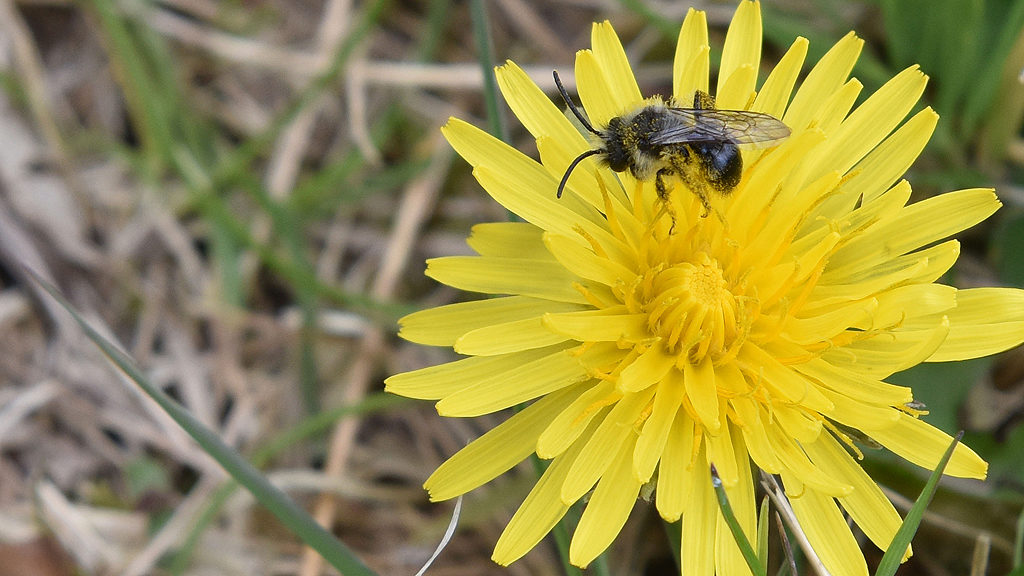
The largest of the chalk scrapes will sit between the 8th and 9th holes, in the centre of the course and a hub in its design. It’s putting conservation and ecology at the heart of the course, and reinforcing the downland heritage.
“Once established, the flora and fauna in several chalk scrapes will be in the eyesight of players throughout their rounds, and ensure that the course fits perfectly into the landscape, both visually and ecologically,” Iestyn enthused.
Creating scrapes, by removing virtually all the top soil to reveal the chalk beneath, sounds simple. But the complex ecosystem of downland flora that has evolved over millions of years, requires a myriad of hollows and undulations that create marginal microclimates in which the natural species can gain a precious foothold.
Iestyn admits that the idea for chalk scrapes was born largely by accident, when clearing the base of a copse and scraping back to the bare earth. However, working with the local branch of Butterfly Conservation, the team has learned and refined the techniques to recreate the natural features.
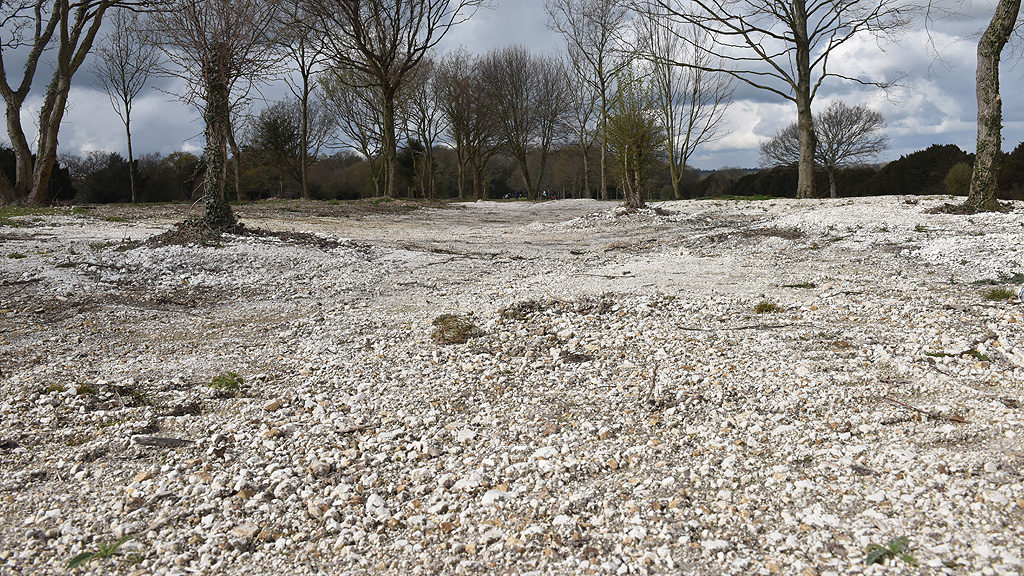
Clive Wood of Butterfly Conservation has worked closely with Corhampton and believes it has the potential to host breeding populations of many butterfly, moth and other pollinator species.
He highlights the good potential for colonisation for three High Priority classified species: the small blue and white admiral butterflies and the striped lychnis moth. “However, the value of the work at Corhampton also offers huge benefits for so-called common species, where over two thirds of all UK butterflies are in long-term decline.”
Clive points out that, from Butterfly Conservation’s perspective, typically just 20-35% of a golf course is intensively managed, involving close mowing and the application of fertilisers and weed management practices.
“That leaves large areas potentially available for wildlife conservation and proactive ecology.”
He emphasised that none of the ecology work is intended to interfere with the enjoyment of the course by its members or with its efficient management by the professional greenkeeping team. “It’s hoped that the new habitat will build upon the excellent work, and further enhance the enjoyment of members by encouraging more butterflies and greater biodiversity to visit and inhabit the course,” he added.
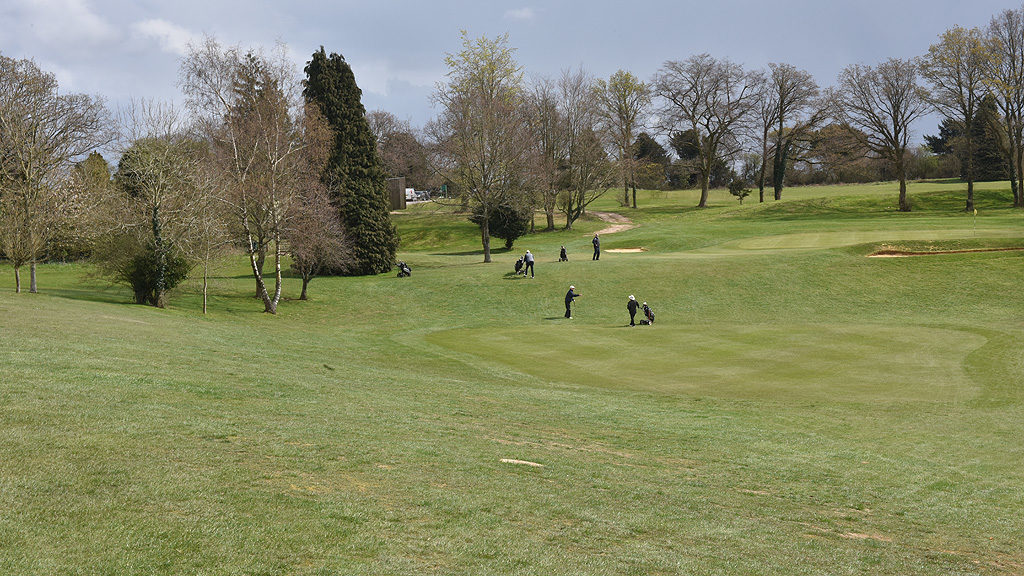
Where Corhampton is set, high on the Hampshire Downs, within an intensively farmed landscape, the golf course can provide essential safe havens and habitat services for wildlife.
The conservation work is providing essential breeding and foraging habitat for many wildlife species, notably small mammals, bats, birds, butterflies, moths, reptiles and many insects.
“That creates essential source populations of species, which are able to colonise surrounding habitat where opportunities arise. Furthermore, it’s a ‘stepping stone’ between other habitats, which facilitates the movement of species through a landscape.
“This latter service makes populations more robust and able to resist chance events and threats, such as fire, disease and gradual habitat degradation, for example.”
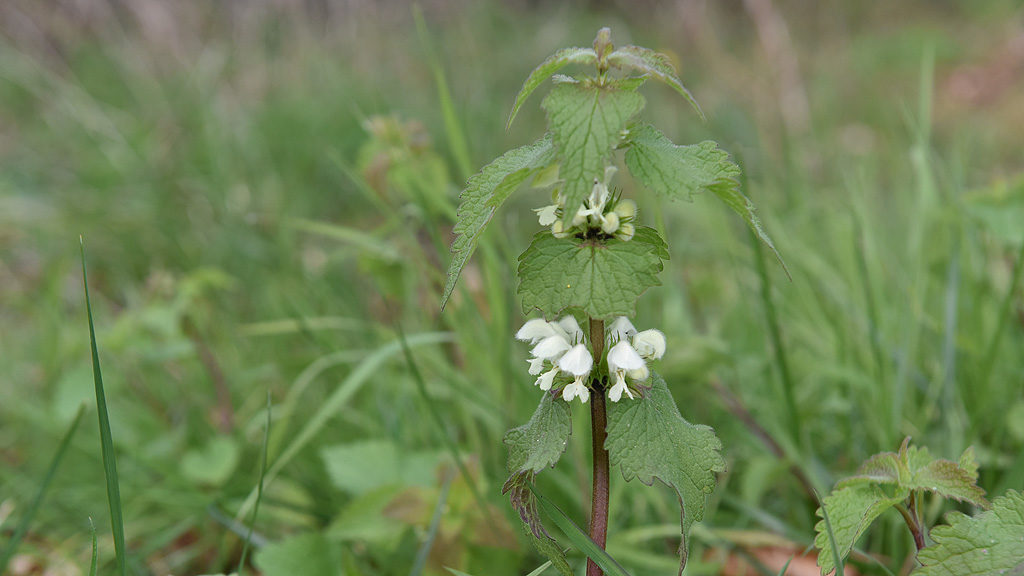
Along with the innovative chalk scrapes, other conservation work by the team at Corhampton include the rich and diverse flora in the out of play rough, including orchid species and parasitic plants, encouraged by the ‘cut and collect’ grassland management.
Small areas of lightly managed or unmanaged ground, often between a green and tee, have generated conditions suitable for wild plants such as cuckoo flower (Cardamine pratensis) and garlic mustard (Alliaria petiolate), the main larval food plants of the orange tip butterfly.
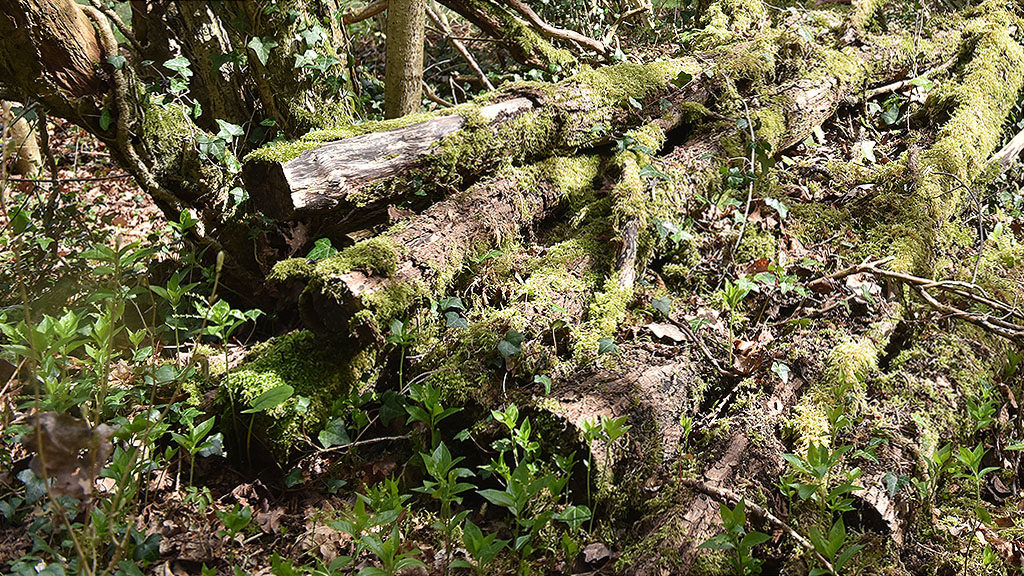
Piles of dead and dying wood have been left strategically at several sites around the course, in both sunny and shaded areas.
It’s a technique the Game & Wildlife Conservation Trust has highlighted can support up to 5,000 native species, including 750 species of beetle and provide a valuable food source for bats and birds.
Good hedgerow management has resulted in healthy species-rich native hedgerows, which are thick and attractive to small mammals and breeding birds. Barn owl boxes have been provided across the site, where they can actively make best use of the meadow habitats created.
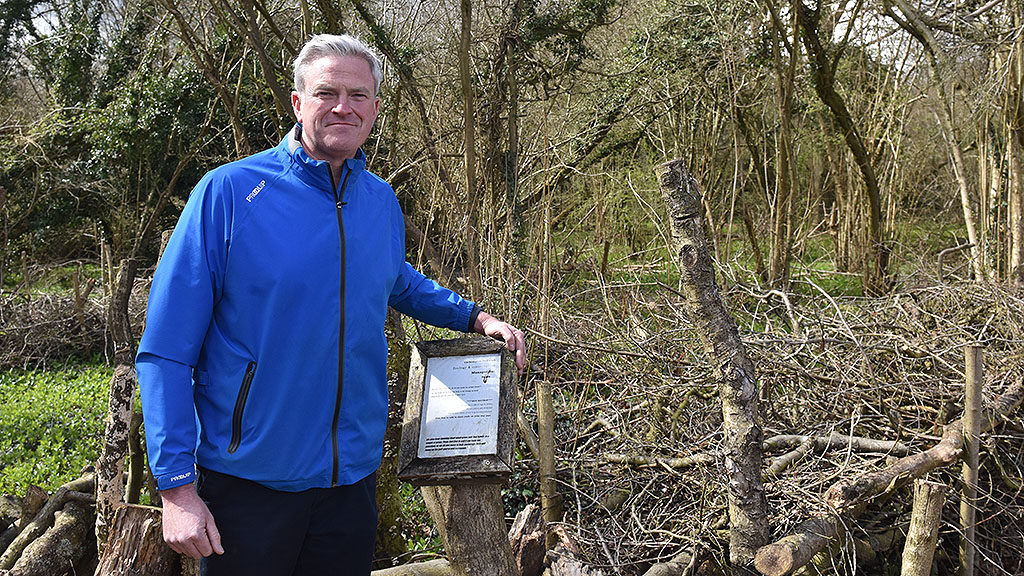
Iestyn views a significant part of his role is to generate the club engagement and support for the ecology initiatives, within the overall context of the course management. “We have to acknowledge that none of the conservation work can be undertaken without the backing and support of the club and the members.
“For almost all members, the golf course and its playability remains the main priority. The ecology and environment can add to their experience and enjoyment, but we need to continue to improve the course condition and day-in-day-out playability.
In some instances he points out that it can go hand in hand, such as thinning rough that encourages fescues and wildflowers, but also improves playability. Clearing large areas of scrub has opened up air flow and allowed in light.
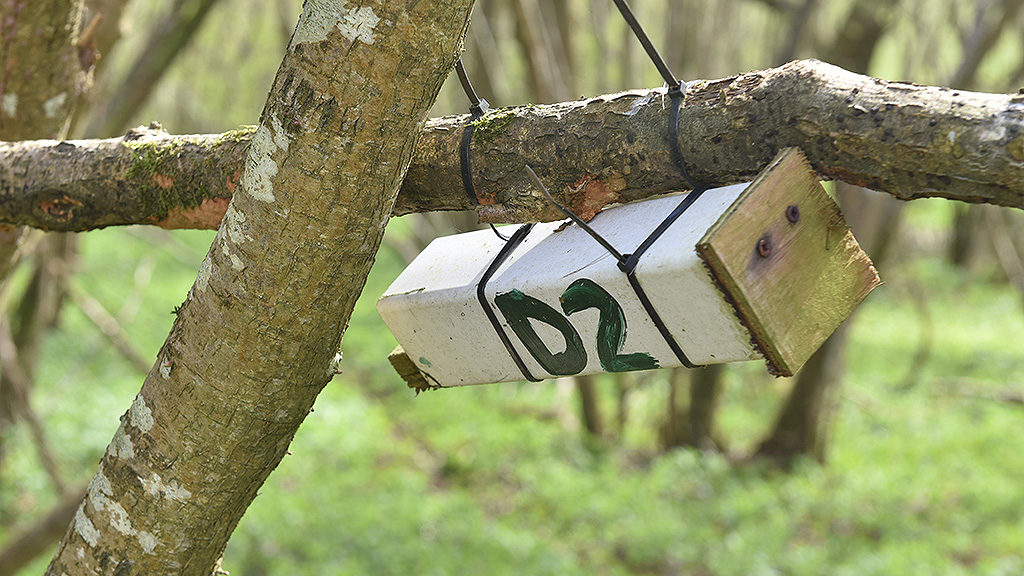
Other projects, such as large scale invasive tree removal, have been potentially more controversial with members, but they are now seeing the benefits in both course design and playability, as well as improved turf health. “It’s given people far greater confidence and trust in what we are planning to do, and has been instrumental in giving us the support to undertake new projects.
“But they also know that - in terms of greenkeeping priority, time and budget - the needs of the course will always come before the conservation initiatives,” he added.
Iestyn believes that the acclaim and recognition for the team’s successes with its conservation work, including the Syngenta Operation Pollinator Award and other local press and publicity, has helped to secure other investment in the course and its maintenance.
“We are constantly striving for ways to improve,” he said. “The focus is on drainage and nutrition, for example. Some greens that can stay wet for too long have become poa dominant, so the club is investing in the drainage that can help us to increase the bentgrass content, which will in turn give the chance to improve surface quality with better targeted inputs.”
Corhampton Golf Club chalk scrape plant species recommendations | |
For chalk scrapes: | For surrounding grassed areas: |
Kidney vetch (Anthyllis vulneraria) Common Bird’s-foot trefoil (Lotus corniculatus) Wild thyme (Thymus polytrichus) Scabious spp. Horseshoe vetch (Hippocrepis comosa) | Knapweed (Centaurea nigra) Marjoram (Origanum majorana) Dark Mullein (Verbascum nigrum) |
Guidelines: Sow 80% grass/20% wild flower mix, at a rate of four grams per m2, increasing to five g/m2 if planted in the spring. | |
Source: Butterfly Conservation | |
Butterfly and moth species identified to potentially benefit from chalk scrape creation at Corhampton Golf Club: | |
Key target species: | Other species: |
Common blue Small blue Adonis blue Dingy skipper Grizzled skipper Chalk carpet moth Striped lychnis moth | Meadow brown Red admiral Brimstone Small white Large white Ringlet Marbled white Comma Small heath |
Source: Butterfly Conservation | |
The pioneering Syngenta Operation Pollinator initiative, to promote ecological habitat creation on golf courses, has hit over 100 clubs signed-up in the UK.
Syngenta Technical Manager, Glenn Kirby, highlights that it has created a massively valuable ecological asset for bumblebees and other biodiversity, as well as adding an extremely attractive environment for players.

"Iestyn and Duncan’s work at Corhampton has demonstrated how golf courses provide ideal locations for habitat creation. With the right management these areas could provide highly beneficial habitat for bumblebees and other pollinating insects.
“Operation Pollinator also enhances the overall playing experience. The wildflower areas improve visual appearance and it creates valuable positive publicity for the club, and for the industry as a whole.”
Operation Pollinator is the culmination of more than 15 years research by Syngenta into the environmental management of habitats for bumblebees, butterflies, spiders, beetles and other insects, backed by STRI trials, support of independent ecologists and research on commercial golf courses across the UK.
“We now have positive examples of every type of course getting involved, at different levels,” Glenn added. “All the clubs are incredibly willing to share their experiences and advice through the Operation Pollinator network, and gain recognition from the Operation Pollinator Award, independently judged by the STRI as part of the Environment Awards."


